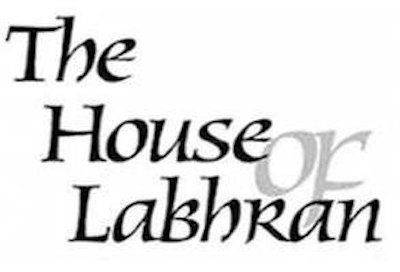Antique WW1 Black Watch Officers Plaid Brooch - Lieutenant Philip Arnold Chapman






Antique WW1 Black Watch Officers Plaid Brooch - Lieutenant Philip Arnold Chapman
Vintage WW1 Black Watch Officers Plaid Brooch - Lieutenant Philip Arnold Chapman
Classic Black Watch officers plaid brooch featuring St Andrew mounted on a thistle wreath, on a disc with engraved edge. An interesting history to this Black Watch regimental plaid brooch has come to light with a little research.
Philip Arthur Chapman joined the London Regiment 1/16 ( County of London Battalion Queens Westminster Rifles T.F aged 16-17 in 1914. Service Number 2329
He arrived in France 1-11-1914 and served as a rifleman. He came off the front 15-12-1914 aged 17 near Armentieres, Flanders after seeing the final few days of Battle of Messines (1914) and was sent to various military hospitals. It is recorded 3-1-1915 as being at the 4th Northern General Hospital suffering from Myalgia which seems to be a term to cover many conditions at the time.
In time he time he returned to duty and his next appearance in the public record in when he is commissioned 19th March 1915 in to ( 3rd Black Watch Royal Highlanders Regiment as 2nd Lt. Record WO374/13255
Promoted to Lieutenant 1 June 1916 6th (Perthshire) Battalion (Territorial)
10th August 1916 issued with the entitlement of a ‘wound stripe ‘ for an action 6th July 1916
By 1918 he is listed 7 Patten Rd S.W 18 in the London Directory as an absent voter Lieutenant 6th Black Watch.
He is still listed an absent voter 7 Patten Rd S.W 18 in the in the London Directory in 1919 but has now changed to Lieutenant 3rd Black Watch.
He is listed on the medal list as being awarded the British War medal and Victory medal, but on the back of the card he put in application for the Mons 1914 Star. It appears he was awarded the medal with the 1914 clasp in 1920 and living back in London. Medal card number 32277
Lt Chapman’s last record we have found is in the London Gazette 1939 when he is listed as Lieutenant Philip Arnold Chapman - Late of the Black Watch
It may well be there is further research that can be done into this officers service history. We will supply some digital copies of the research docs with the plaid brooch.
White metal with good back pin
Size approx 106mm
We have offer a range of vintage, antique and collectible Scottish regimental glengarry badges, regimental officers kilt pins, plaid brooches, belt buckles and regimental sporran cantles. This range of ever changing stock make wonderful additions to any collection of Scottish military badges and insignia.
The Black Watch Royal Highlanders
The Black Watch was raised in the wake of the 1715 Jacobite rebellion, when companies of trustworthy Highlanders were drawn from loyal clans comprising Campbells, Grants, Frasers and Munros. Six companies were then formed in 1725 and stationed in small detachments across the Highlands to prevent fighting between clans, to deter raiding and to help enforce laws against the carrying of weapons. In 1739 King George II authorised the raising of four additional companies to be formed into a "Regiment of the Line" of the regular army, with the Earl of Crawford as Colonel. The first mustering of the new Black Watch regiment took place near Aberfeldy the following year. The Black Watch name was derived from the dark colour of the tartan and the original role of the regiment to "watch" over the Highlands. In 1743 the regiment was ordered to march to London for inspection by the King. Due to a rumour that they were to be forced to serve in the West Indies rather than service in Scotland for which they had been enlisted, many of the men mutinied and decided to return home. Over a hundred were captured and returned to London, where they were tried by court martial and three of the leaders were condemned to be shot in the Tower. The remainder of the regiment proceeded to Flanders for action against the French. It remains for speculation whether the 1746 Rebellion could ever have taken place had the Black Watch been left to fulfil its original role of policing the Highlands.
Between 1745 and 1800 the Black Watch saw action in Fontenoy, the French-Indian War at Ticonderoga, Guadaloupe, Martinique, Havanna and the American War of Independence. The next 15 years saw action against the French in Egypt, the Peninsular War in Spain and Portugal and Napoleon's Waterloo campaign. During the later 1800s the regiment saw service in the Crimean War, the Indian Mutiny, conflicts in Africa and the Boer Wars. At the start of the 1st World War in 1914 there were 7 Black Watch Battalions and the regiment saw action in Mons, the Western Front, Mesopotamia and Palestine. During the 2nd World War the regiment saw action in Palestine, Somaliland, France, North Africa, Italy, North West Europe and Burma.
More recently the Black Watch served in Palestine, Hong Kong, Korea, Kenya, Northern Ireland, the Balkans and Iraq.
In recent years the Pipes and Drums of the Black Watch have carried out 11 tours in North America on behalf of Columbia Artists, some accompanied by the regiment's Military Band. A significant milestone in the history of the Black Watch Pipe Band was when 9 pipers from the Band played at the State Funeral of President John F Kennedy of the USA in November 1963, reflecting the impact which the Pipe Band had made in an earlier tour of the USA.
The regimental tunes are the quick march "Hielan Laddie" and the slow airs "My Home" and "Highland Cradle Song". Since 2006 the Black Watch regiment has been known as 3 SCOTS The Black Watch as part of the Royal Regiment of Scotland.
